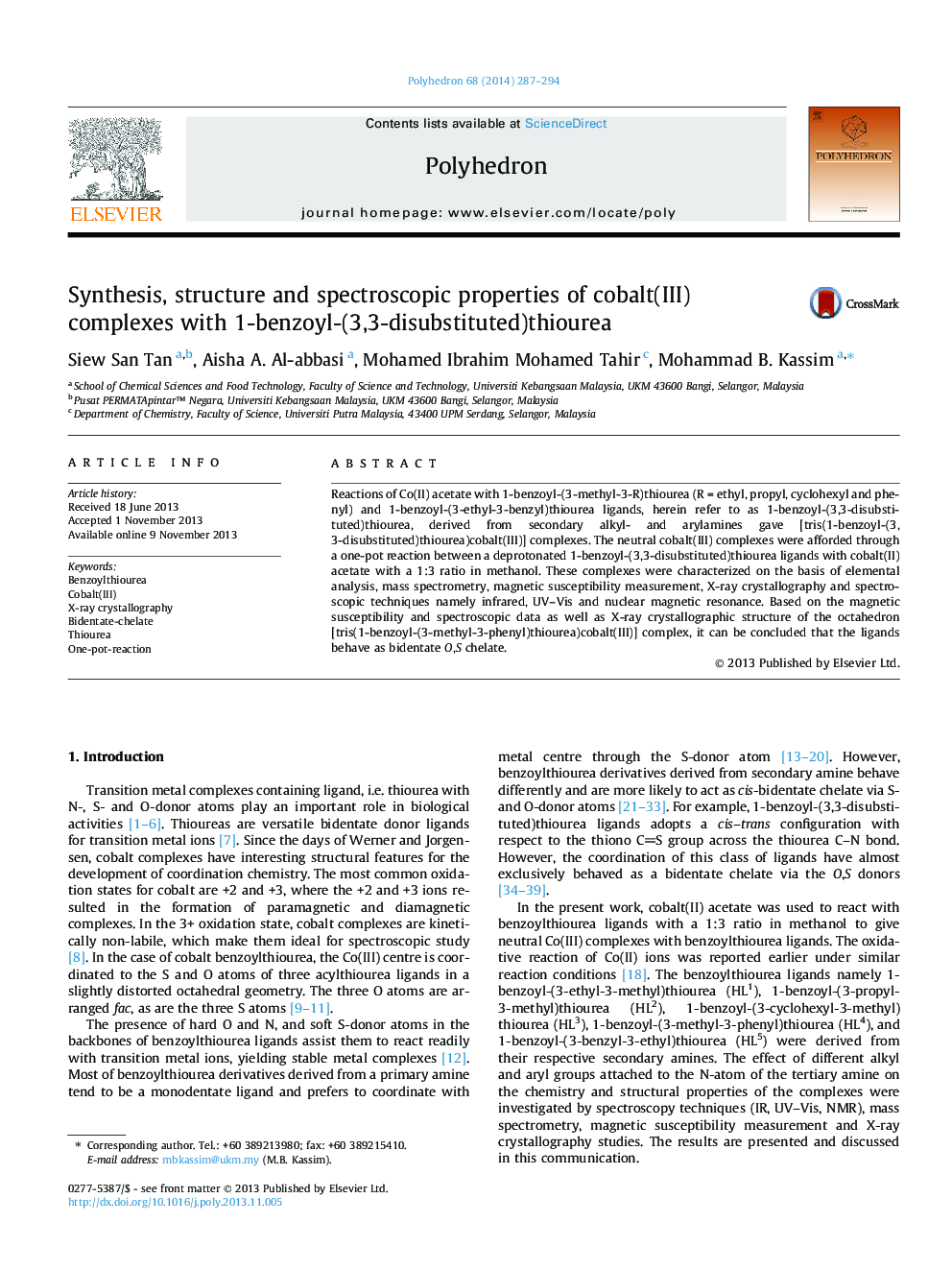| Article ID | Journal | Published Year | Pages | File Type |
|---|---|---|---|---|
| 1336615 | Polyhedron | 2014 | 8 Pages |
Reactions of Co(II) acetate with 1-benzoyl-(3-methyl-3-R)thiourea (R = ethyl, propyl, cyclohexyl and phenyl) and 1-benzoyl-(3-ethyl-3-benzyl)thiourea ligands, herein refer to as 1-benzoyl-(3,3-disubstituted)thiourea, derived from secondary alkyl- and arylamines gave [tris(1-benzoyl-(3,3-disubstituted)thiourea)cobalt(III)] complexes. The neutral cobalt(III) complexes were afforded through a one-pot reaction between a deprotonated 1-benzoyl-(3,3-disubstituted)thiourea ligands with cobalt(II) acetate with a 1:3 ratio in methanol. These complexes were characterized on the basis of elemental analysis, mass spectrometry, magnetic susceptibility measurement, X-ray crystallography and spectroscopic techniques namely infrared, UV–Vis and nuclear magnetic resonance. Based on the magnetic susceptibility and spectroscopic data as well as X-ray crystallographic structure of the octahedron [tris(1-benzoyl-(3-methyl-3-phenyl)thiourea)cobalt(III)] complex, it can be concluded that the ligands behave as bidentate O,S chelate.
Graphical abstractA series of ligands bearing an O,N and S donor atoms derived from the reaction of benzoyl chloride and secondary amine derivatives namely, N-ethylmethylamine, N-methylpropylamine, N-cyclohexymethylamine, N-benzylethylamine and methylphenylaminewas synthesized. Octahedral cobalt(III) complexes of the 1-benzoyl-(3,3-disubstituted)thiourea ligands were afforded from the reaction of the ligands with cobalt(II) acetate. The chemistry, structures and spectroscopic properties of the molecules were investigated to understand their coordination chemistry and structural properties. X-ray structure revealed that the cobalt complex was neutral and the Co2+ ion was oxidized to Co3+ during the complexation reaction. The ligands behave as O,S bidenate chelate and coordinated in the thiolate form. No significant effects were observed for the structural and spectroscopic properties of the ligands and complexes with various substituents on the amine N-atom.Figure optionsDownload full-size imageDownload as PowerPoint slide
